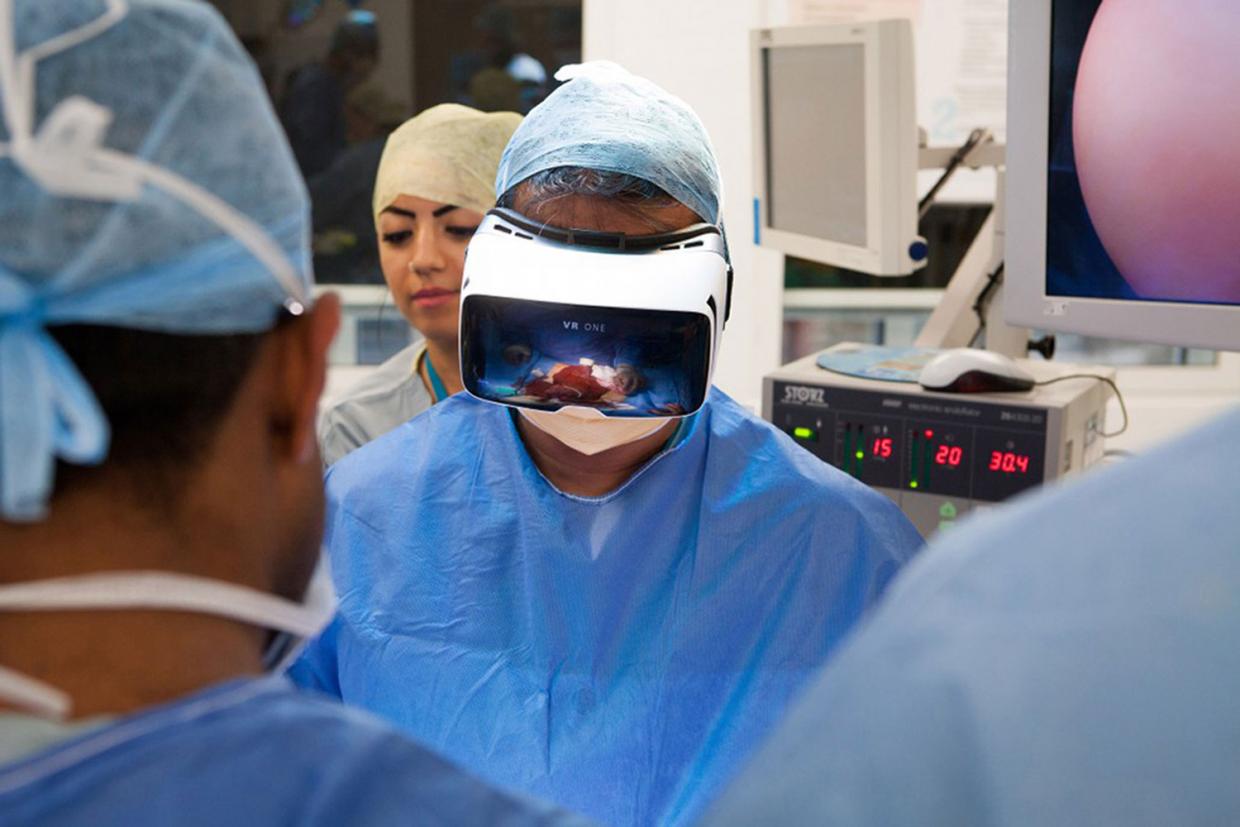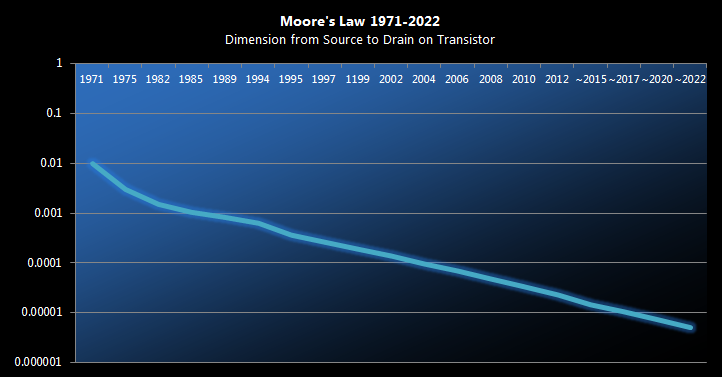VR and not only: creating a base for the era of computing with the effect of presence
 Before speaking at IFA in Berlin, on September 3, 2016, Mark Papermaster, CTO of AMD, shared his view on the future of the computer industry and told why the solutions for computing with the effect of presence (so-called "immersive" calculations) will form a new market with potential of a billion buyers.
Before speaking at IFA in Berlin, on September 3, 2016, Mark Papermaster, CTO of AMD, shared his view on the future of the computer industry and told why the solutions for computing with the effect of presence (so-called "immersive" calculations) will form a new market with potential of a billion buyers.I was invited to the IFA exhibition, which will be held in September, to speak on the topic of virtual reality or 'VR'. Frankly, with undisguised pleasure I agreed to talk about VR right now! Not only because this topic is on the agenda, but also because I personally consider the emergence of such technologies as the first, but bright signals of the onset of a new era of immersive computing.
If we right now together recall the path that the computer technology industry has gone through over the past 50 years, then we can identify several important evolutionary stages. The first epoch was devoted to centralized computing, and the IBM mainframe became the undisputed leader in this area. Moving on: the next era passed under the banner of personal computers, and in particular desktops, which became a mass phenomenon in the early 1980s. And the third and most modern era is mobile computing, which develops largely due to the reduction in the size of processors and sensors, which have become an integral part of most devices on the market.
Today we do not just accept and use mobile technologies: they have already become one of the key components of our daily life. From VR and smart homes to autonomous cars, it seems that there are no directions that would not affect modern technology.
')
Beyond Virtual Reality
In January of this year, Klaus Schwab (Klaus Schwab), the founder of the World Economic Forum, announced that we are on the verge of a technological revolution. He said that the modern pace of the emergence of innovative technologies has no precedent in history, with the result that development is taking place exponentially. I agree with him on this.
We live in an age when almost all devices are interconnected and equipped with a variety of sensors to improve the contextual awareness system, and the audio and visual recognition functions are becoming more and more accurate. Modern graphics systems and ultra-high-resolution displays create opportunities to transmit images of incredibly high quality, almost indistinguishable from the real. And the rapid development and widespread adoption of open source software greatly accelerates application development.
All these factors make it clear that we are moving into a fundamentally new era of immersive calculations. This unique time will be characterized by the presence of network connections not only between devices, but also between people, processes and data that will change the way people interact with technology. Also, the principles of study, work and games will not remain unchanged. It is safe to say that we will almost always be immersed in the computational processes and the work of artificial intelligence, and technology will penetrate even more deeply into our daily lives, and will interact with people in ways that we are just beginning to imagine today. And virtual reality is an excellent example of this interaction.
Many IT specialists predict that VR will fundamentally change the field of education, as well as a number of other industries: from retail to military industry, from healthcare to entertainment, games and fashion.
According to the latest estimates, the VR market will be $ 80 billion dollars by 2025 . And even despite the current relatively small market volumes, there are already examples of using the unique features of VR. Imagine that it will be possible to study history, literally completely immersed in the events under study! However, my favorite example is the experience of the Royal London Hospital , which shoots oncological operations with a 360-degree camera to educate medical students and tell the general public about the training of surgeons in the institution. The head physician of the hospital emphasizes that VR can make the healthcare system more effective by helping to improve the practice of training surgeons around the world.

Not less exciting than VR, looks like Augmented Reality (AR) technology, which has even more potential for the market and everyday life of people. AR superimposes the VR projection onto the real world, creating a so-called mixed reality, embracing the entire empirical space between the existing world and the virtual world.
Moore's Law Plus
Speaking about the exciting possibilities of technology, we often forget that solutions like VR were made possible only thanks to advances in the semiconductor industry. In particular, we observed a significant increase in energy efficiency and an increase in the computing power of the chips along with the parallel development of the scale of graphics technologies and displays.
However, if we really want to fully enter the era of immersive computing, silicon chip makers will have to overcome a number of serious obstacles.

From the very beginning of the development of personal computers, manufacturers and developers relied on Moore's law, which guarantees a twofold increase in computing capacity every 18-24 months while maintaining the same power and costs. This pace of development allowed us to quickly expand the capabilities of the PC, and achievements in terms of efficiency made the emergence of low-power devices that prompted us to move into the era of mobile computing.
Unfortunately, we can not deceive the laws of physics. And, despite the fact that Moore's law is still relevant, its effect has slowed down significantly, so the improvement of semiconductor circuits now requires more time and effort and financial costs. In recent years, we have seen that only a combination of new design methods and innovative technologies allows developers to maintain the speed of increase in the functionality of manufactured devices.
In connection with the need to find a way to create and implement new solutions that are suitable for the era of immersive calculations, I believe that we need something called the “Moore's Plus Law”. This concept can be described as follows: to save the geometric progression of productivity growth and cost optimization, companies from the semiconductor industry need to use a creative engineering approach. In my opinion, to provide the necessary power to support the era of immersive computing, Moore Plus's law will require a combination of CPU for computing, GPU for computing plus visualization, as well as other acceleration modules. These computing systems will be integrated and implemented in a new design, which will allow them to work together as efficiently as possible.
The epoch of immersive computing
I really want to share my thoughts about VR at the upcoming event in Berlin. Tell about the opportunities, prospects and business models that await us ahead. We are at the very beginning of the era of immersive computing, so the development of technology will occur not only faster than before, but also on a much larger scale. The world will not be the same as we know it today - it will change drastically!
The main pillars on which this new world will be based are high performance and low power consumption of computing and visualization systems. These "pillars" are already manifesting themselves today and continue to evolve, but we need to understand that we are only at the very beginning of the era of immersive computing, and the products currently available are comparable with the first smartphones presented at the time. As you remember, they immediately had a positive effect on the audience, but at that time no one even thought that over time we literally could not leave home without these devices, and smartphones themselves would change the entire mobile market, stimulating the emergence of completely new unique applications and services.
This is an amazing time for all of us, and I believe that with the development of silicon circuits at the processor level, AMD creates a “base” for the production of great products in the future.
Source: https://habr.com/ru/post/397085/
All Articles